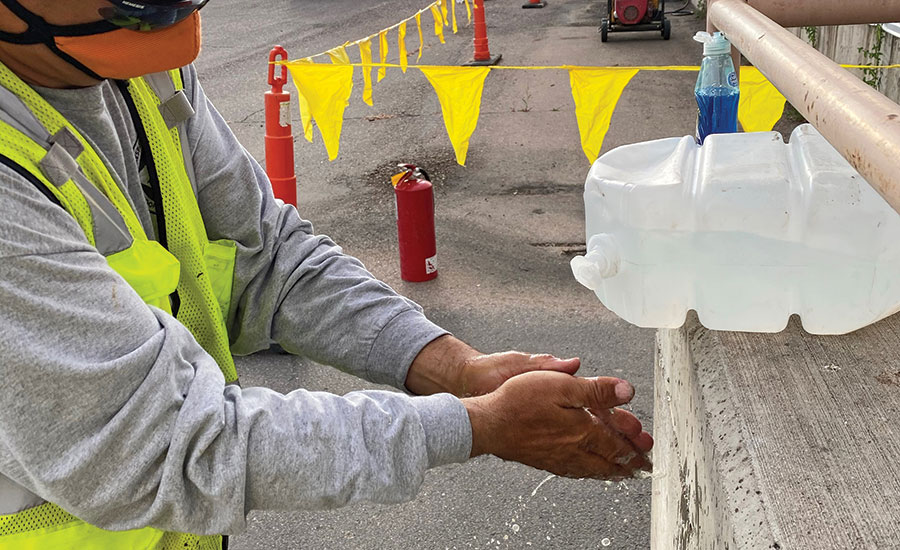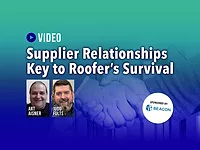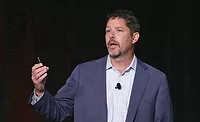Building Effective Relationships Key to Successful 2021

Editor’s Note: As the roofing industry looks forward after a year of uncertainty, SOPREMA USA’s Matt Davis and a team of product managers sat down to discuss what’s next for the roofing trade. They shared their thoughts and ideas on what’s needed for building, protecting and sustaining the industry for years to come.
The foundation of any successful business starts with building relationships, and the roofing industry is no different. In fact, it’s often said, “Who you know is more important than what you know,” and meaningful relationships go far beyond a business transaction such as a sale or project delivery.
Industry leaders support that developing relationships with customers, vendors, competitors and coworkers result in increased trust. And where there is trust, people work together more easily and effectively. Investing effort in identifying and building collaborative relationships can increase confidence across the project environment, minimize uncertainty and speed up problem-solving and decision-making. This is something many learned this year with the arrival of the coronavirus.
Building open lines of communication with architects, engineers, consultants, building owners, contractors, facility managers, distributors and other industry leaders also helps companies stay tapped into the day-to-day realities and shifting needs of their customer base and industry. Even turning employees’ feedback into changes, initiatives or talking points shows them they’ve been heard.
Not only will a positive relationship streamline projects and minimize additional costs, but it could also result in the opportunity for future work. By building trust, communicating openly and often, and understanding the needs each other has, the relationships with stakeholders prove to be a valuable part of any business model, including the roofing market.
Protecting People’s Health and Property
Besides having useful connections in the industry, companies need to focus on what’s important to their customer base and their employees. Industry surveys by associations and businesses themselves show that organizations want to work with companies that produce materials aimed at protecting people — their health and their property.
The World Health Organization estimates about 7 million people die every year from exposure to fine particulates in polluted air. Forty-three percent of Americans live in counties with unhealthy levels of ozone or particle pollution, according to the American Lung Association’s “State of the Air 2019” report. Now, when architects, roofing consultants, building owners and contractors read statements like these, they can take action and do their part to improve air quality by working with manufacturers and suppliers of environmentally-conscious products.
According to the National Roofing Contractors Association, roof system maintenance is often the most overlooked area of a roof management plan. It is also the single most important factor — after proper installation — for maximizing the life span and minimizing the life cycle cost of a roof system. The goal of preventive or proactive maintenance is to sustain and ensure the true service life of the commercial roof through inspections and necessary repairs. Ultimately, inspections should be performed at least twice a year and following severe weather like hailstorms, and as required by the manufacturer’s warranty. A quality preventive maintenance program must be designed to meet the needs of property owners, facility managers and building occupants.
All roofs have a limited lifespan and will eventually require replacement, renovation or restoration. Developing a preventive maintenance plan can further extend the life of the roof and save money.
 Workers with D.C. Taylor Co. in Iowa make sure they wear masks and practice disinfecting protocols like washing hands. Photo courtesy of D.C. Taylor Co.
Workers with D.C. Taylor Co. in Iowa make sure they wear masks and practice disinfecting protocols like washing hands. Photo courtesy of D.C. Taylor Co.
Sustaining Infrastructure for Generations
At its narrowest, sustainable infrastructure can refer to “green” or “smart” buildings. More broadly, it can include a wide range of initiatives with a specific focus on energy, water and land management; green areas; smart technology and the use of sustainable, durable building materials. It can also refer to existing infrastructure that is retrofitted, restored, remodeled and recycled.
As it relates to green construction, communities across the U.S. are experiencing the benefits of green infrastructure. A study in 2012 that focused on 479 green infrastructure projects across the U.S. found that 44% of green infrastructure projects reduced costs, compared to the 31% that increased the costs. Cost-benefit analyses, like these, have helped to support green roof policies in places like San Francisco, Washington, D.C. and New York.
In fact, some legislation is even requiring sustainable rooftop systems. Two recent laws passed as part of New York City’s Climate Mobilization Act require solar panels or green roofs on all new construction, as well as buildings undertaking major roof renovations. They also increase the roof reflectiveness required by the existing cool roofs law.
By using clean energy and vegetation on rooftops, architects, building owners, contractors and building occupants can lower energy bills, cut carbon emissions, create habitat, reduce the urban heat island effect and better manage stormwater.
Moving Forward
While this past year was anything but typical, the commercial roofing market and those who comprise it are proving resilient. Demand for quality products and commercial roofing services are strong, and many opportunities exist for contractors and architects who understand the value of building, protecting and sustaining our roofing industry.
Looking for a reprint of this article?
From high-res PDFs to custom plaques, order your copy today!







